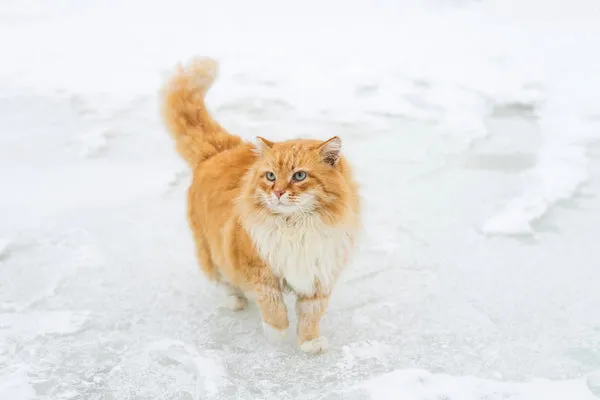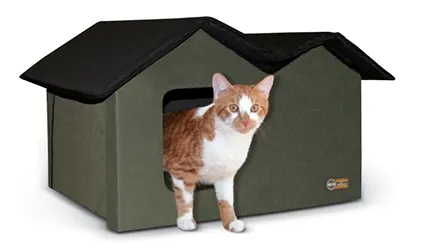Providing a safe and comfortable retreat for your feline companion, especially if they spend time outdoors, is a top priority for any cat owner. Whether you’re looking to offer an outdoor haven for a stray, a community cat, or even a pampered house cat who enjoys fresh air, encouraging them to use a dedicated cat house can sometimes be a delightful challenge. Unlike a house-trained indoor cat, an outdoor feline might approach new objects with caution. This guide will walk you through effective strategies to tempt even the most hesitant kitty into their new, cozy abode.
One of the first steps in introducing a cat house is understanding your cat’s natural instincts. Cats are creatures of habit and comfort, often seeking out warm, secure, and quiet spots to rest and observe their surroundings. A cat house should cater to these fundamental needs, offering a sense of privacy and protection from the elements. By applying a little creativity and patience, you can successfully integrate a cat house into your cat’s routine, ensuring they have a reliable sanctuary. Consider how you might train cat scratcher behaviors; similarly, introducing a cat house requires positive reinforcement and a clear understanding of feline preferences.
Entice Them With Food and Water Near Their New Home
A cat’s stomach is often the quickest path to their heart and trust. One of the most effective strategies to encourage cats to use a new house is to link it directly with their feeding and watering routine. Cats, especially those accustomed to outdoor living, will often overcome initial shyness for the promise of a delicious meal. Begin by establishing a consistent feeding schedule in the precise location where you intend to place or have already positioned the cat shelter. This consistency helps them associate that specific area with positive experiences, making them more likely to explore.
It’s highly beneficial for cats to eat and drink close to their shelter. This minimizes their travel distance during inclement weather or cold temperatures, providing immediate access to sustenance in comfort. Consider integrating their feeding station with their shelter for ultimate convenience and protection from the elements. Products designed for this purpose, such as a two-story kitty house with an integrated dining area, can serve as a prime example, offering both shelter and a protected feeding spot. These options often come in heated and unheated versions, catering to different climate needs and offering an additional layer of appeal during colder months.
For maintaining water availability and warmth, especially in freezing conditions, heated food and water bowls are invaluable. Placing a heated water bowl or a complete feeding station near the cat house ensures that water doesn’t freeze, making the area a reliable source of hydration. Protecting these bowls within a designated outdoor dining room attachment further shields them from wind, rain, and snow, solidifying the cat house area as a safe and comfortable hub for all their essential needs. This strategic placement not only draws them to the shelter but also reinforces the idea that this spot is a secure place for their daily provisions.
Position the Cat Shelter in a Secure and Discreet Location
The feeling of security is paramount for cats when choosing a resting spot. To maximize the chances of your cat utilizing their new outdoor cat house, its placement is critical. An ideal location offers protection from potential threats and the elements. Avoid placing the house in an exposed, vulnerable position, such as the open center of a yard. Instead, aim for a more secluded and sheltered area. Good examples include a barn, garage corner, under a covered porch, or beneath a substantial overhang. The goal is to shield the house from prevailing winds, heavy rain, and snow, ensuring a truly protective environment.
Elevating the cat house slightly off the ground by placing it on a flat, stable surface can further enhance its appeal. This helps to insulate it from cold, damp ground and offers an added sense of safety from ground-level disturbances. The entrance to the cat house should be just large enough for your cat to comfortably enter and exit but small enough to deter larger predators. Cats, especially those that are wary, will feel safer knowing that their entrance is restricted to their size. Furthermore, a cat house with two entrances provides an essential escape route if the cat ever feels cornered, which significantly increases their willingness to explore and use the shelter. This design consideration taps into their natural instinct for safety and control. Cats appreciate their personal boundaries; for instance, some prefer to stay off counters if they have a dedicated, comfortable space of their own.
Warmth is an Irresistible Allure for Felines
It’s a well-known fact that cats are drawn to warmth. They possess an uncanny ability to sniff out a cozy spot, even from a distance. This inherent love for warmth makes a heated cat house an exceptionally appealing option, especially during the colder months. If you’re designing or choosing a shelter, prioritizing insulation is key. Natural materials like straw (avoiding hay, which can be damp and moldy) or shredded newspaper can provide excellent insulation, trapping heat within the enclosure. These materials are also comfortable for cats to nest in, adding to the overall appeal of the shelter.
Keeping the cat house relatively small is another effective strategy for maximizing warmth. A smaller interior space means that the cat’s body heat, perhaps even combined with the warmth of two or three cats snuggling together, will radiate and maintain a higher temperature more efficiently. This creates a wonderfully snug environment that is far more inviting than a large, drafty space. The combination of secure placement, readily available food, and irresistible warmth creates a powerful magnet for any cat seeking comfort. Understanding these preferences can also help answer questions like do cats need potty training by providing them with a suitable, warm, and safe environment where they feel comfortable enough to relax and establish routines.
Selecting Sturdy, Outdoor-Ready Shelters for Long-Term Comfort
When investing in a cat house, durability and weather resistance are paramount, particularly if it’s intended for outdoor use. A well-constructed, warm, and secure shelter becomes an even stronger magnet during winter. The market offers a wide array of heated cat houses, each with unique features catering to different preferences and needs. From insulated, weather-resistant models with multiple exits for safety to extra-wide versions designed to accommodate several feline residents, there are numerous options to consider.
 A friendly cat peeking out from a cozy, well-insulated outdoor cat house, inviting comfort and safety.
A friendly cat peeking out from a cozy, well-insulated outdoor cat house, inviting comfort and safety.
Some shelters come in appealing designs, such as A-frame cabins, constructed from heavy-duty materials to withstand rain, snow, and wind effectively. These larger models are perfect for multi-cat households or community cat colonies. For individual cats or those with specific comfort needs, shelters featuring heated pads that cover only a portion of the floor allow the cat to choose between a warm or unheated sleeping surface. This choice caters to individual preferences and varying temperature requirements.
 An extra-wide olive-colored outdoor cat house with a robust design, suitable for multiple cats seeking shelter.
An extra-wide olive-colored outdoor cat house with a robust design, suitable for multiple cats seeking shelter.
If you already have a basic shelter, you can easily upgrade its warmth by adding an outdoor-rated heated pad. These pads are specifically designed for outdoor use, often featuring steel-wrapped cords to deter chewing and coming with a soft fleece cover for added comfort. Such enhancements can transform a simple structure into an irresistible cozy retreat.
 A chocolate-brown A-frame multi-kitty outdoor house, offering a charming and spacious refuge for several cats.
A chocolate-brown A-frame multi-kitty outdoor house, offering a charming and spacious refuge for several cats.
Beyond the physical shelter, establishing a routine for your cat can also encourage its use. Learning how to train my cat to sit or teaching a sleep train kitten involves similar principles of consistency and positive association. The same goes for making their cat house a familiar and favored spot.
 A modern gray heated cat shelter with a unique design, featuring a comfortable heated pad for feline occupants.
A modern gray heated cat shelter with a unique design, featuring a comfortable heated pad for feline occupants.
Conclusion
Encouraging your cat to embrace their new house comes down to creating an environment that appeals to their deepest instincts: safety, comfort, and easy access to resources. By strategically placing the shelter in a secure location, enticing your feline friend with regular food and water nearby, and ensuring the space is wonderfully warm, you can transform a simple structure into a beloved sanctuary. The patience and thoughtfulness you invest in setting up this ideal spot will be rewarded with the sight of your cat enjoying peaceful, warm naps, shielded from the cold winds and harsh weather outside. Providing this dedicated retreat not only enhances their well-being but also strengthens the bond you share, knowing you’ve offered them a truly safe and comfortable home away from home. Explore more articles on our site to ensure your cat thrives in all aspects of their life.
